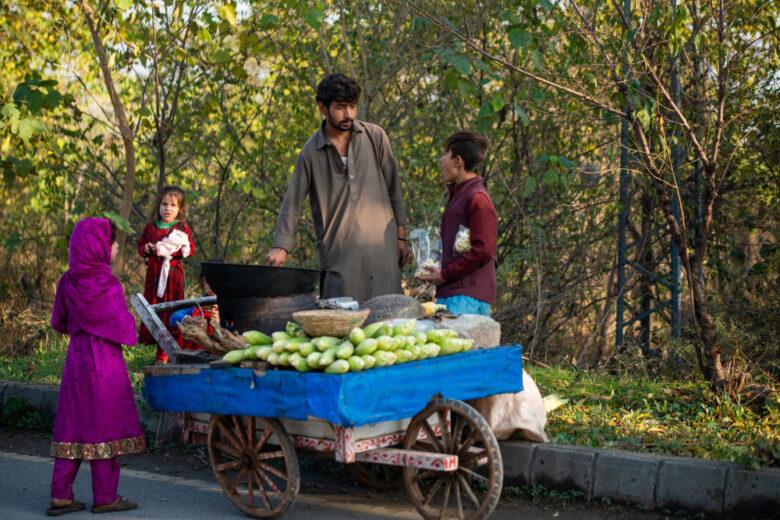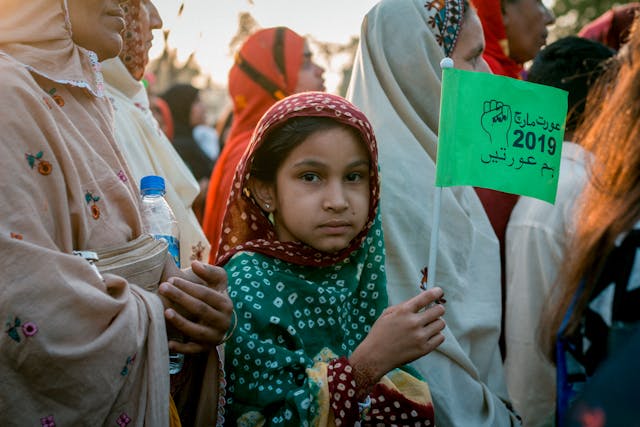The development theory has broadly focused on two types of economic activities: large-scale production by urban, capital-intensive sector and small-scale production by labor-intensive, traditional subsistence sector economies. This has led to the urban formal and informal sectors.
Theories on the Informal Sector
According to Arthur Lewis, traditional sector workers – such as street vendors, hawking, letter writing, seasonal workers, domestic workers, subsistence farmers – are unproductive because they do not contribute to urban work (Lewis, 1954). In his view, when surplus labor transfers from the traditional to the industrial sector, productivity, growth and employment in the modern sector of the economy increase. He further assumed that employment continues to expand with self-sustaining modern sector industrial growth, absorbing all surplus labor (Lewis, 1954).
Contrary to Lewis’ skepticism about informal workers, Todaro and Smith (2012) put forth that if wages remain higher in the urban informal sector than in the rural economy, it translates into higher productivity.
In addition, contrary to Lewis Dual Sector Model (which says services by informal workers are unproductive), productivity measured by the UN-Habitat City Prosperity Index includes both dimensions of employment: formal and informal, along with other variables. The index measures productivity by the city product, which is the “total output of goods and services produced by the city’s population during a specific year” (Habitat, 2013).
Consequently, it can be argued that the failure of the rural and urban formal sector has created a space for the informal sector to absorb labor. The informal economy employs half of the urban population in many areas of developing countries. For example, in India, the employment share of the informal sector in Kolkata is 28.5 percent and 65.5 percent in Bangalore. It is over 70.5 percent in Conakry, Guinea (Todaro and Smith, 2012, p. 328).
These large employment percentages by the informal sector allow migrant workers to get out of the poverty trap. Although this sector does not provide sufficient income for some workers to afford shelter, it is higher than in the most impoverished rural regions.
Along with income opportunities for the poor – as on average it employs up to 50% of the labor force of the urban sector – the informal sector is a source of cheap inputs to the formal sector (Todaro and Smith, 2012, p. 331). Hence, there is not only the provision of benefits by the formal sector as put forth by Lewis.
Moreover, contrary to Lewis Dual Sector Model’s assumption that extra income and profit is reinvested, Todaro and Smith (2012) argue that output is not reinvested, rather taken by owners of capital. Given the capitalist’s profits being invested into labor-saving technologies, the implicit assumption of Lewis does not hold that the rate of capital accumulation by the modern sector is proportional to employment opportunities and the rate of transfer of labor from the traditional to the modern sector.
Hence, employment levels for the masses remain unchanged – where they were before industrial growth. The development of the modern industrial sector may contribute to the rising GDP of the country, but has no substantial effect on the social welfare of the masses as wages and employment remain stagnant (Todaro and Smith, 2013).
The Productivity Gap between the Sectors
Nonetheless, the classic pattern of growth based on rapid industrialization results in an overall increase in productivity when more workers are employed in modern sectors – and the productivity gap between the two sectors dampens. This growth pattern is observed only in postwar development in Spain, Portugal and Asian growth miracle countries, including Taiwan, South Korea and China. Still, it cannot be examined in today’s developing economies.
Dani Rodrik called today’s phenomenon of industrial growth premature deindustrialization. Young people migrate to cities but cannot secure employment in factories. Instead, they land in a less productive informal sector. Structural changes from manufacturing to services are still prevalent today, but they are premature. Such as, regulated organized sectors to informal, modern tradable to traditional non-tradable, large firms to small firms – which contribute to the significant lag of growth in some parts of Asia, Africa, and Latin America (Rodrik, 2013).
To close the widening gap within parts of the economy, Rodrik proposes the following strategies. First, to empower the small and medium enterprises to expand into the formal sector to increase productivity and sustain the incomes of the excluded workers of the economy. Second, to grow modern sector opportunities so those low-skilled workers with less formal education and lack of access to financial services can find work (Rodrik, 2013).
The specific policies will depend on the local context of the country. In a broad view, the government should set up incentives such as special economic zones and tax cuts for small firms to invest in tradable, modern sectors. For this, the government has to create an inclusive environment free of expensive long-term laws, regulations and restrictions. Instead of only focusing on productive growth, it must also ensure decent working conditions, job protection rights, and pension benefits.
The Case for the Informal Sector
The arguments in favor of promoting the informal sector show that the informal sector is propulsion to growth. It can generate revenue in a hostile environment when policies are not in favor of them. In the examples of tax exemptions and credit, the informal sector is similar to the formal sector. As the informal sector is a low capital-intensive sector, it does not require as much capital to hire a person as in the formal sector. It employs workers at less wage. But provides training at lower costs, thus contributing to human capital.
This sector demands semiskilled and unskilled labor, unlike the demand for skilled labor in the formal sector. It also uses technologies – and by using local resources, it has a more efficient allocation of resources. The informal sector also has a tremendous role in recycling waste before it reaches the industrial sector (Todaro and Smith, 2013).
Having mentioned all those benefits, it is implicit that the informal sector contributes to the development of the poor to engage in the services provided by this sector. However, it is criticized by traditional development theorists, such as Arthur Lewis, as unproductive services.
If the informal sector is transformed into the formal sector, not only the poor that are left behind would suffer, the formal sector would also be deprived of the services provided by informal workers – which are criticized for being “petty.”
On the flip side, the promotion of the informal sector may increase rural to urban migration, which contributes to environmental challenges. Governments should promote the informal sector outside the cities or in smaller towns outside dense urban areas.
From the evidence of revealed preferences, it is evident that as more opportunities are available in the formal sector, many informal workers would be willing to switch (Todaro and Smith, 2013). Hence, there is a need to create more employment opportunities in the formal sector, but not to aggressively pose restrictions on the informal sector, as observed in posh areas of Lahore where street vendors are not allowed to enter residential colonies.
Nevertheless, the informal sector has emerged as a panacea of the unemployed workforce in many developing economies. In Egypt, half of the workers are employed in the informal economy because, since 1990, the formal private sector has failed to generate adequate jobs for the growing labor force.
According to the 2014 ILO school-to-work transition survey of Egyptian youth aged 15-29, other than the 9% employment in the formal sector and 33% in the informal sector, 58% of the youth surveyed were employed in informal jobs within the formal sector. It shows that though the formal sector is creating jobs, they are unwilling to formally hire young graduates (Kolster, 2016).
Such informal employment in the formal sector is difficult to diagnose, thus addressing informality and designing policies for them is more challenging.
Furthermore, among the young population, young women from rural areas of Egypt are more vulnerable than all others in society (World Bank, 2007). They remain trapped in informality as urban areas create more formal jobs than rural areas. Of all informal workers, women have the highest percentage in the informal sector.
In South Asia, more than 80 percent of women form non-agricultural jobs. 74 percent in sub-Saharan Africa and 54 percent in Latin America and the Caribbean are in the informal sector of the economy. In El Salvador, Mercedes Sanchez is an example of how rural women pave the way for income by themselves. She has started an association with six other fellow women where they cooperatively organized themselves to grow and sell vegetables (UN Women, 2015).
Other than the poor people’s involvement in the informal sector, many youth graduates start their careers from informal small and medium enterprises. The cost of doing business disincentivizes the owners to register according to the laws and regulations. It requires extensive days to register a business; in Ecuador, 240 days; in Guatemala, 525 days, and 320 days in Venezuela. Such delayed processes surge the cost (Todaro and Smith, 2013).
There is a need to take adequate measures to encourage the small sector enterprises and improve their cost of doing business.
Furthermore, the general measures introduced by the International Labor Organization shed light on the hostility towards the informal sector. It proposes that access to skills can play a significant role in the restructuring of the informal sector. Governments should provide training to improve the services provided by the informal sector that can add more value to society. The provision of skills and incentives also promotes legal activities (Todaro and Smith, 2013).

However, it can also contribute to the unemployment of the workers who are involved in illegal activities only because of financial constraints. Providing credit by microfinance institutions allows small and medium enterprises to expand and generate employment. Infrastructure and technological development can also help them expand, hire the unemployed, and help governments compensate for the loss of unemployment.
Among small-scale businesses – many of which are run by women, such as handicrafts and foodstuffs – have very low capital-labor ratios. Thus, productivity diminishes, but these businesses have a higher rate of return on small investments. It has been shown in Latin America and Asia that credit availability to women results in increased repayment rates than men.
However, these credit programs remain limited and ineligible for most women as they are channelized through the formal sector. Instead of efficient allocation of resources by formal institutions, governments should focus on the neediest households and integrate women into the mainstream.
Women’s special circumstances should be considered in policy design to ensure women’s benefits. Accessible and affordable childcare and family-planning services can increase economic participation by women (Todaro and Smith, 2013).
Conclusion
Urban planning has wreaked havoc in many ways on the informal sector living in the slums. The urban policy intends to make cities more liveable and claim to be prosperous at the expense of destroying slums and informal settlements.
Slum prevalence ranges from 62 percent in Sub-Saharan Africa, 25 percent in Western Asia, 35 percent in South Asia, 24 percent in Latin America and the Caribbean, to 13 percent in North Africa (Habitat, 2013).
These different patterns of slum prevalence – in which most of the population is involved in the informal sector – demand different sets of policies according to their varying degrees of access to fundamental services.
Bibliography
Dhillon, N., Salehi-Isfahani, D., Dyer, P., Yousef, T., Fahmy, A., & Kraetsch, M. (2009). Missed by the boom, hurt by the bust: Making markets work for young people in the Middle East. Washington, DC: MEYI.
Habitat, U. N. (2013). State of the world’s cities 2012/2013: Prosperity of cities. Routledge.
Kolster, J. (2016). Addressing Informality in Egypt. working paper, African Development Bank Group, North Africa Policy Series.
Lewis, W. A. (1954). Economic development with unlimited supplies of labour. The Manchester School.
Rodrik, D. (2014). The growing divide within developing economies. Project Syndicate.
Todaro, M. P., & Smith, S. C. (2020). Economic development. Pearson UK.
Women, U. N. (2015). Progress of the world’s women 2015-2016: Transforming economies, realizing rights. UN Women.
World Bank. (2007). Youth–An Undervalued Asset : Towards a New Agenda in the Middle East and North Africa. World Bank.






